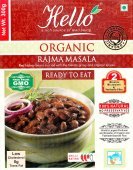Bean: 1 definition
Introduction:
Bean means something in Hinduism, Sanskrit. If you want to know the exact meaning, history, etymology or English translation of this term then check out the descriptions on this page. Add your comment or reference to a book if you want to contribute to this summary article.
In Hinduism
Shilpashastra (iconography)
Source: Shodhganga: Elements of Art and Architecture in the Trtiyakhanda of the Visnudharmottarapurana (shilpa)The Bean is denoted by the Sanskrit term Māṣa, and represents a particular shade of the blue color, created through the principles of the ancient Indian tradition of Painting (citra), according to the Viṣṇudharmottarapurāṇa, an ancient Sanskrit text which (being encyclopedic in nature) deals with a variety of cultural topics such as arts, architecture, music, grammar and astronomy. In the Viṣṇudharmottarapurāṇa, five colours are regarded as the primary ones. Mixing of colours is a great technique used by the artists to make numerous shades of colours. Many shades of a particular colour also can be created by increasing or decreasing the quantity of the white part in the mixture. [...] The colour of the blue lotus (nīlotpala) and bean (māṣa) can be created when blue is amalgamated with light whitish yellow in more, less or in equal.

Shilpashastra (शिल्पशास्त्र, śilpaśāstra) represents the ancient Indian science (shastra) of creative arts (shilpa) such as sculpture, iconography and painting. Closely related to Vastushastra (architecture), they often share the same literature.
See also (Relevant definitions)
Starts with: Bean tree, Bean trefoil, Bean-clover.
Ends with (+155): Adanka bean, Aduki bean, Adzuki bean, African locust bean, African oil bean, African winged bean, African yam bean, Amazonian yam bean, Arsenic bean, Asparagus bean, Atta bean, Azuki bean, Bambarra bean, Banner bean, Beach bean, Bertoni bean, Black bean, Black seeded kidney bean, Black soybean, Black-eye bean.
Full-text (+743): Mudga, Masha, Maudgina, Vanamudga, Makushtaka, Purishama, Rajamasha, Mashajya, Mashapesham, Supaparni, Mashya, Khandira, Saharasa, Sitamasha, Masina, Ghevada, Rajamudga, Surkshya, Mukushthaka, Shimbiparni.
Relevant text
Search found 102 books and stories containing Bean; (plurals include: Beans). You can also click to the full overview containing English textual excerpts. Below are direct links for the most relevant articles:
Vinaya Pitaka (3): Khandhaka (by I. B. Horner)
Allowance for sugar, etc. < [6. Medicine (Bhesajja)]
Allowance for five dairy products, etc. < [6. Medicine (Bhesajja)]
On rejection of what is prepared indoors, etc. < [6. Medicine (Bhesajja)]
Manusmriti with the Commentary of Medhatithi (by Ganganatha Jha)
Verse 8.135 < [Section XXIII - Measures]
Verse 8.134 < [Section XXIII - Measures]
Verse 9.39 < [Section III - To whom does the Child belong?]
The Bhikkhus Rules (by Bhikkhu Ariyesako)
Meal Time < [Chapter 3 - Possessions And Offerings]
Eating Alms Food < [Appendix B]
Receiving And Eating Food < [Chapter 3 - Possessions And Offerings]
Manasara (English translation) (by Prasanna Kumar Acharya)
Chapter 8 - The Sacrificial offerings (balikarma)
Chapter 66 - The intermediate ten tāla measures (madhyama-daśatāla)
The Markandeya Purana (by Frederick Eden Pargiter)
Tibetan tales (derived from Indian sources) (by W. R. S. Ralston)
Related products
(+20 more products available)





